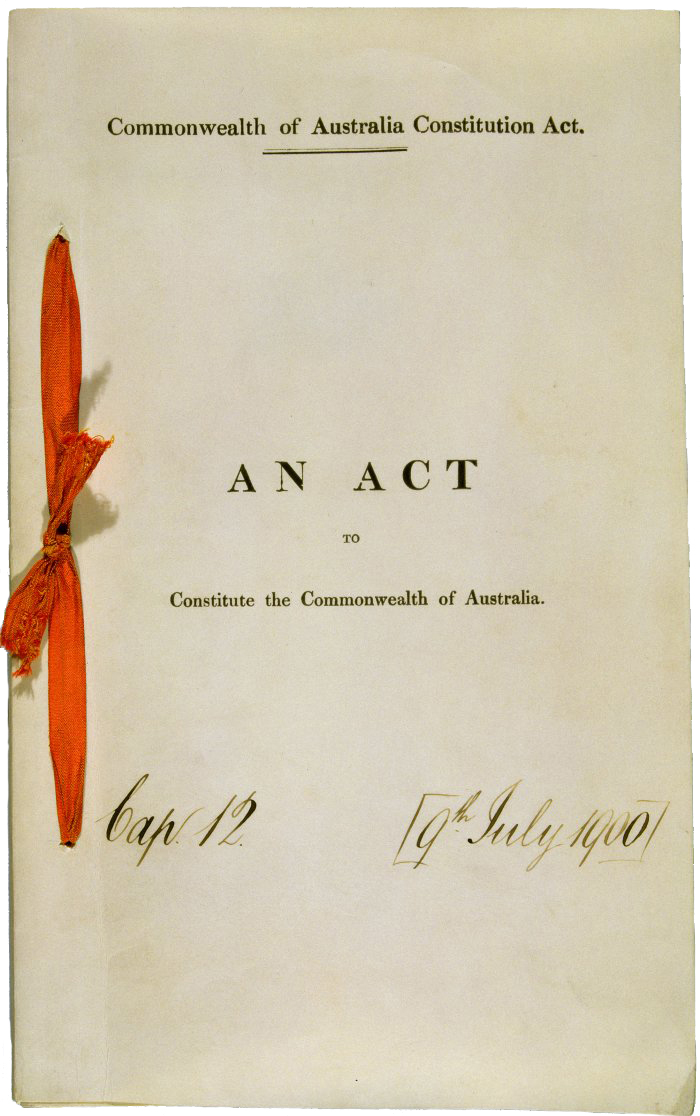Australian Constitution
This fact sheet explores the Australian Constitution. It includes information about the key features of the Constitution and how it can be changed.
What will I learn?
- The Constitution is the set of rules by which Australia is run.
- The Constitution can only be changed with the approval of the Australian people.
Curriculum alignment
Year 6 AC9HS6K06
Year 7 AC9HC7K01
Year 7 AC9HC7K03
Year 9 AC9HC9K01
Year 10 AC9HC10K03
What is the Australian Constitution?

Commonwealth of Australia Constitution Act, 1900: Original Public Record Copy (1900).
Parliament House Art Collection, Art Services Parliament House
Commonwealth of Australia Constitution Act, 1900: Original Public Record Copy (1900).

Parliament House Art Collection, Art Services Parliament House
Description
This image shows the front page of the original public record copy of the Commonwealth of Australia Constitution Act 1900.
Copyright information
Permission for publication must be sought from Parliament House Art Collection. Contact DPS Art Services, phone: 02 62775034 or 02 62775123
Birth certificate of a nation
For at least 60,000 years, Aboriginal and Torres Strait Islander peoples have lived on these lands and practiced traditional cultures and languages. From the late 1700s, British colonies were set up on the continent. By the late 1800s, these colonies had their own parliaments but were still under the rule of the British Parliament. Many colonists began to see the benefits of uniting into a federation.
During the 1890s representatives from each colony attended a series of meetings, called conventions. During these conventions, the Constitution was drafted. It was then put to a vote by the people of the colonies who approved it.
However, the Constitution also had to be agreed to by the British Parliament. The Commonwealth of Australia Constitution Act 1900 was passed in Britain in 1900 and came into effect on 1 January 1901. The colonies became Australian states and the new Australian Parliament was formed.
Features
The Constitution is divided into 8 chapters and 128 sections. Some of the key features of Australia’s system of government outlined in the Constitution are:
- an Australian Parliament and government, responsible for national decision-making and law-making
- a bicameral Parliament – with 2 houses – including the King (represented by the Governor-General), the Senate and the House of Representatives
- 6 state governments, responsible for state matters
- power-sharing arrangements between the Australian and state parliaments
- the High Court of Australia, which is the final court of appeal. The High Court interprets the Constitution and decides its meaning. It also settles disputes between the Australian and state governments.
The Constitution does not cover all features of Australia’s system of government. For example, the Prime Minister and the Cabinet are not mentioned in the Constitution. The Prime Minister and Cabinet operate by custom and tradition, similar to the British system from which they came.
The Constitution does not detail many of the rights of the Australian people. Unlike the Constitution of the United States, Australia's does not include a bill of rights. In Australia, rights are protected by common law (based on custom or court decisions) and statute law (written law made by Parliament).
Changing the Constitution
The Constitution can only be changed with the approval of the Australian people. A proposed change must be approved by the Parliament and then be voted on by Australians in a referendum. A referendum is only passed if it is approved by a majority of voters in a majority of states, and by a majority of voters across the nation. This is known as a double majority.